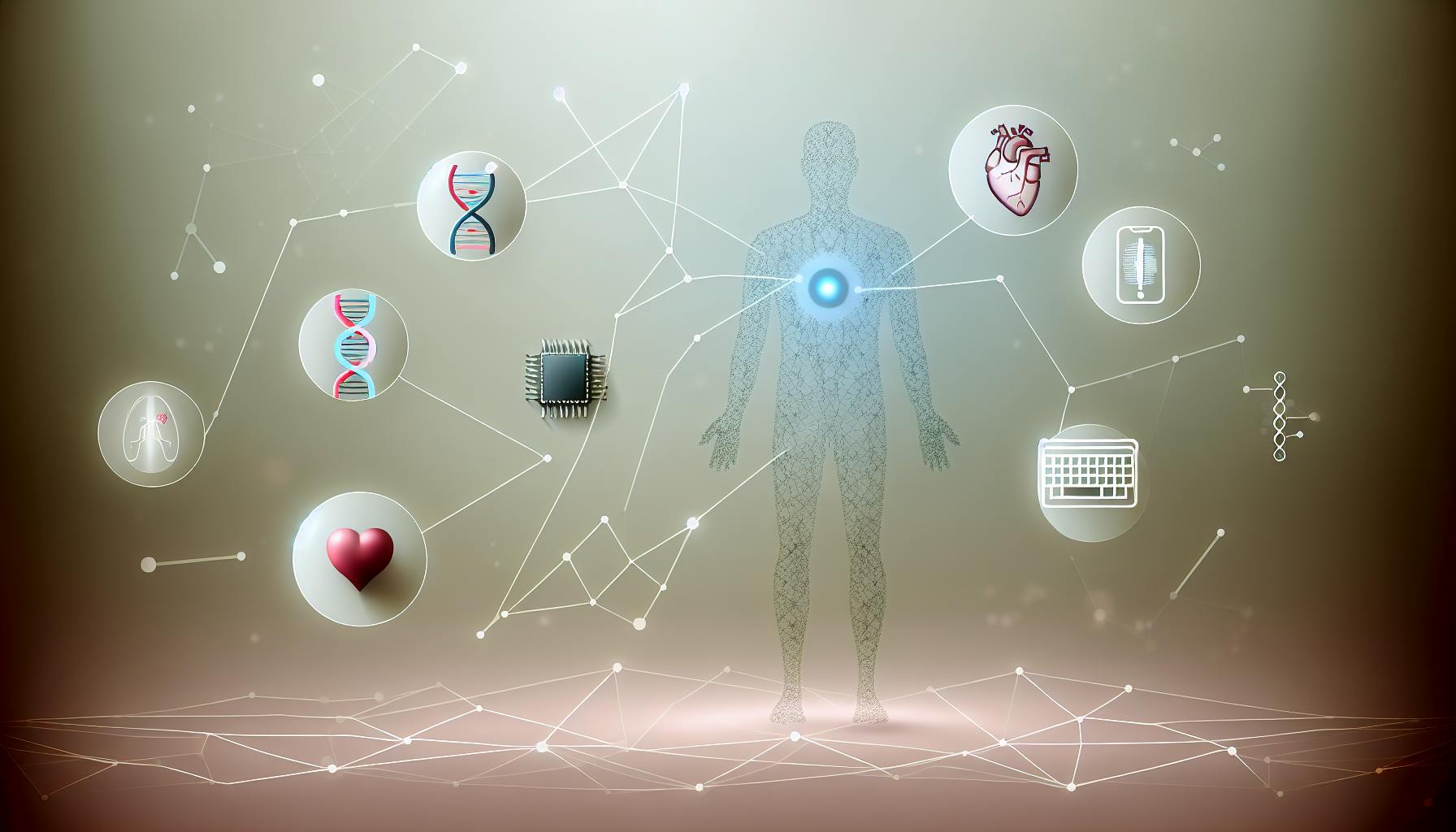Clinical workflow optimization is crucial for enhancing efficiency, reducing costs, improving patient care, and reducing physician burnout.
This guide dives into practical strategies and technologies that can streamline healthcare processes, from automating documentation with AI to standardizing workflows and leveraging analytics for continuous improvement.
Whether you're a healthcare professional or an administrator, understanding these best practices can lead to more effective patient care and a better working environment for staff.
- Simplify and speed up healthcare tasks by eliminating unnecessary steps and fixing slow processes.
- Use health IT systems and AI tools like virtual scribes to automate documentation, saving clinicians hours of work.
- Standardize workflows to ensure consistency and efficiency across patient care tasks.
- Improve communication and information sharing among healthcare teams. Ensure everyone operates at “top of license.”
- Leverage analytics to monitor performance and identify areas for improvement.
By focusing on these key areas, healthcare facilities can achieve significant benefits, including reduced wait times for patients, lower operational costs, and happier, more engaged staff.
The Growing Need for Optimization
Healthcare is getting more expensive, and there aren't enough staff. Because of this, finding ways to do things more efficiently is really important. When processes are streamlined, practice groups can spend less money and resources on each patient while still providing good care.
Also, making workflows better can help with doctor burnout. Burnout is a huge driver of an exodus from the workforce. By making tasks easier and more straightforward, doctors can spend more time caring for patients.
Expected Benefits
Making clinical workflows better can lead to:
- Up to 30% less time spent on paperwork by clinicians
- Better diagnoses because of improved teamwork
- 55% shorter wait times for patients
- Happier staff who are more likely to stay
- More money made from seeing more patients
Improving how clinical workflows are done can make things better for both patients and healthcare workers.
Understanding Workflows in Healthcare
Components of a Clinical Workflow
In healthcare, there's a set of steps that teams follow to look after patients. Here's what they usually do:
- Patient intake/assessment: They start by collecting information about the patient's health history and current symptoms to figure out what might be wrong.
- Diagnostics: They might run tests like blood work or imaging to get a clearer picture of the patient's health issue.
- Treatment planning: Based on what they find, they come up with a plan that suits the patient, keeping in mind what works best and what the patient prefers.
- Interventions: This is where they put the plan into action, like giving medication or doing a procedure.
- Documentation: They write down everything that happened, from the patient's symptoms to the treatment plan and how it went.
- Care coordination: The team talks to each other and with other healthcare providers to make sure everyone's on the same page about the patient's care.
- Patient education: They explain the health issue, treatment options, and how to take care of oneself at home to the patient and their family.
- Discharge/referrals: When the patient is ready to go home, they make a plan for what comes next, like any follow-up care or referrals to other specialists.
Common Challenges
Healthcare teams often run into problems like:
- Communication gaps: It's hard to share information quickly because different systems don't talk to each other well.
- Data silos: Patient information is scattered across different systems, making it tough to see the full picture.
- Documentation burdens: Capturing clinical encounters manually (or even using dictation software) takes up a lot of time.
- System integration issues: When healthcare tech systems don't work well together, it disrupts patient care.
- Inefficient system designs: Clunky systems can slow everything down.
- Duplicative steps: Doing the same thing in different systems or paperwork adds extra work.
Impact on Patient Care
When workflows aren't smooth, it can:
- Cause delays in figuring out and treating health issues.
- Lead to mistakes because of mixed-up information or not having all the details.
- Make coordinating care hard when different doctors or places are involved.
- Frustrate clinicians and make them more likely to feel burnt out.
- Make patients unhappy if they have to wait a long time or go through unnecessary steps.
Fixing these workflow issues is key to making sure patients get good, safe, and quick care that focuses on them.
The Role of AI Assistance
Automating Documentation
AI tools like virtual scribes are changing the game in how doctors keep track of patient visits. These tools listen to what's said during an appointment and turn it into a written record automatically. They understand human speech and can organize this information in a way that makes sense.
These scribes work with electronic health records (EHRs), making sure everything said in the room is noted down right away, without making the doctor stop to write things down. This means:
- Quicker note taking: They write down everything in real-time, so there's no waiting around.
- Better notes: The notes are clear, organized, and less likely to have mistakes.
- Doctors save time: Doctors can save hours each day that they used to spend writing notes.
This lets doctors pay more attention to their patients, knowing that the note-taking is handled.
Enhancing Clinical Workflows
Virtual scribes make things better by:
- Making it easier to keep track of patient visits
- Cutting down on paperwork for doctors
- Helping doctors spend more time with patients
- Making sure everyone involved in a patient's care knows what's going on
Instead of getting stuck with writing notes, doctors can use their time to give better, more personal care.
For instance, with automatic note-taking, doctors don't have to go back and check their notes after seeing a patient. This means they can quickly decide what to do next for the patient.
Driving Better Patient Outcomes
When note-taking is quicker and easier, it leads to:
- Faster and more accurate understanding of a patient's health
- Better teamwork among doctors because everyone can see detailed patient info easily
- Happier patients because doctors can focus more on them
By taking the load of note-taking off doctors, AI helps them use their skills where it matters most. This approach makes sure patients are listened to and understood, leading to better care.
Best Practices for Optimization
Making clinical workflows better is key to helping healthcare run smoother, cutting costs, and improving how patients are cared for. Here, we'll talk about some top ways to make workflows more efficient, based on what has worked well in real life.
Standardizing Workflows
To make things more consistent and efficient, it's important to make common tasks follow a set pattern. Here's how:
- Mapping current workflows to see the whole process from start to finish
- Identifying areas of variation in how tasks are done
- Defining standards with input from the team on the best way to do things
- Documenting standards in easy-to-follow guidelines
- Integrating standards into electronic health records (EHR) settings
- Training staff on these new, streamlined ways of working
Making sure everyone does things like patient check-ins, tests, and sending patients home the same way cuts out extra steps.
EHR Customization
Tweaking electronic health records to fit these new standard workflows helps get rid of unnecessary paperwork and makes sure everyone follows the process. Some ways to do this include:
- Designing note templates that only ask for the important stuff
- Setting up protocols as preset orders that include what needs to be documented
- Using mandatory form fields to make sure nothing gets missed
- Building data validation rules to catch mistakes
- Auto-populating fields to avoid typing the same information more than once
These changes help keep everything running smoothly without extra paperwork.
Streamlining Communication
Good communication is essential for coordinating care. Some solutions are:
- Centralized messaging platforms for clear, direct messages between team members
- Configurable alert rules for automatic updates on important patient info
- Shared documentation tools for easy access to patient data by anyone on the team
- Visual cues in EHR to remind the team of next steps
Better communication helps prevent mix-ups and delays.
Ongoing Analytics
Keeping an eye on how workflows are doing helps spot problems and areas that can be better. Here's what to do:
- Selecting metrics that matter, like how fast tasks are done, costs, and care quality
- Extracting data from EHR and other tools
- Analyzing trends to see how changes are making an impact
- Identifying root causes of any issues
- Implementing changes based on what the data shows
This approach helps keep improving workflows based on real information.
Change Management
Getting everyone on board with new workflows is crucial. Here's how to make it work:
- Gaining leadership buy-in
- Involving staff in planning and making decisions
- Providing hands-on training on the new processes
- Reinforcing changes through guidance and checks
- Soliciting user feedback to make further improvements
- Recognizing achievements in making these changes stick
When everyone's involved and committed, making workflows better becomes a team effort that keeps getting better over time.
sbb-itb-527d68c
The Future of Clinical Workflow Optimization
The way we make clinical workflows better is always changing, thanks to new tech that keeps showing up. With the help of AI assistants, better ways for systems to work together, and smarter analytics, clinicians will see their work get easier. This means less paperwork and more time to care for patients.
Expanding Use of AI Assistants
AI tools that act like scribes are becoming more important. They listen to what's said during patient visits, understand it, and turn it into clinical notes. Then, they put these notes straight into electronic health records (EHRs), so doctors don't have to. This could save doctors over 100 hours a year, which means less stress and more time for patients. As these AI tools get better, they'll be able to handle more complex integrations.
Interoperability Advancements
One big problem has been that different healthcare systems don't always talk to each other well. But new tech is working on this problem. For example, FHIR is a system that helps different technologies share information more easily. This means less double work for doctors and fewer lost details. Getting these systems to work together smoothly is key for making things better for everyone.
Specialized Analytics
Using data to figure out where things are slow or could be better is getting more advanced. These smart systems can find where things get stuck, figure out what frustrates doctors, and suggest better ways to do things. They use a lot of data to give really specific advice. This helps healthcare leaders see where they can make improvements and follow how things get better over time. With better data, making workflows smoother can really pay off.
Conclusion
Making clinical workflows better is really important for places that provide healthcare. It helps them work better, take care of patients better, and make everyone happier. Using smart ways to improve how things are done and bringing in new tech can make a big difference.
Key Takeaways
- It's key to make clinical workflows better by looking at how things are done, using tech better, and always checking how things are going. This helps places run smoother and take better care of patients.
- Making sure everyone does things the same way, using machines to do routine jobs, making different systems work well together, and making sure everyone can talk easily are good steps to get rid of extra steps and slow-downs.
- New tools like AI (artificial intelligence) and smart data analysis can help a lot by doing boring tasks for us, finding useful info, and helping make decisions based on data.
- It's important to get everyone on board with changes and make sure leaders are involved. This helps make sure the new ways of doing things work out.
- Regularly checking important info lets us see what's getting better, save money, and do better business over time.
In the end, using a mix of tried-and-true methods and new tech can really change how clinical workflows happen. This all aims to make patient care better through more efficient work, better productivity, and care that's more focused on the patient.


